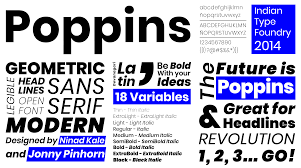The seamless integration of fonts and their optimal rendering across Windows, Android, Linux desktop, and various Content Management Systems (CMS) is crucial for delivering a consistent and visually appealing user experience. This white paper delves into the key factors influencing font legibility, explores the nuances of font implementation across different platforms and CMS, and provides practical recommendations for ensuring optimal font rendering.
A Comprehensive White Paper: Fonts, Legibility, and CMS Across Platforms
Introduction
The seamless integration of fonts and their optimal rendering across Windows, Android, Linux desktop, and various Content Management Systems (CMS) is crucial for delivering a consistent and visually appealing user experience. This white paper delves into the key factors influencing font legibility, explores the nuances of font implementation across different platforms and CMS, and provides practical recommendations for ensuring optimal font rendering.
Understanding Font Legibility
Font legibility is the ease with which text can be read and understood. Key factors influencing legibility include:
- Font Type:
- Serif Fonts: Traditional fonts with small strokes at the ends of characters, often used for body text.
- Sans-Serif Fonts: Modern fonts without serifs, often used for digital displays.
- Script Fonts: Cursive fonts that mimic handwriting.
- Monospaced Fonts: Fonts with fixed character widths, often used for code and programming.
- Font Size: The size of the font relative to the viewing distance.
- Line Height: The vertical space between lines of text.
- Character Spacing: The horizontal space between characters.
- Font Weight: The thickness of the font strokes.
- Color Contrast: The difference in brightness between the foreground and background colors.
Font Implementation Across Platforms
Windows:
- System Fonts: Windows comes with a variety of system fonts, including Arial, Times New Roman, and Calibri.
- Custom Fonts: Users can install custom fonts to be used in various applications.
- ClearType: A technology that improves font rendering on LCD screens.
Android:
- System Fonts: Android devices use a variety of system fonts, including Roboto and Noto.
- Custom Fonts: Users can install custom fonts on some Android devices.
- Font Scaling: Android devices often allow users to adjust font size and scaling settings.
Linux Desktop:
- System Fonts: Linux distributions typically include a wide range of fonts, including FreeSans, DejaVu Sans, and Liberation Sans.
- Custom Fonts: Users can install custom fonts through package managers or by manually copying font files to the font directory.
- Font Configuration: Linux distributions offer various tools for configuring font rendering and scaling.
Font Implementation in CMS
WordPress:
- Plugin-Based: Use plugins like "Easy Google Fonts" or "WP Google Fonts" for easy integration.
- Theme Customization: Modify the theme's CSS to add custom fonts or Google Fonts.
Joomla:
- Extension-Based: Use extensions like "Easy Google Fonts" or "DK Live CSS" for seamless integration.
- Template Customization: Modify the template's CSS to add custom fonts or Google Fonts.
Magento:
- Theme Customization: Modify the theme's CSS to add custom fonts or Google Fonts.
- Extension-Based: Some extensions offer font customization options.
Best Practices for Font Usage
- Choose Readable Fonts: Opt for fonts with clear and distinct characters.
- Consider Font Pairing: Pair fonts harmoniously to create visually appealing designs.
- Optimize Font Loading: Minimize the number of font files and optimize their loading.
- Test Across Devices: Ensure consistent font rendering on different devices and screen sizes.
- Prioritize Accessibility: Use sufficient color contrast and font sizes to accommodate users with visual impairments.
- Regularly Review and Update: Stay updated with font trends and best practices.
Conclusion
By carefully considering font choices, understanding platform-specific nuances, and following best practices, you can create visually appealing and highly legible digital experiences across various platforms and CMS. By prioritizing font legibility and implementing effective font strategies, you can enhance user satisfaction and overall website performance.
References:
- Google Fonts: https://www.fontsquirrel.com/
- Typekit: https://webaim.org/
- W3C Web Accessibility Initiative:
Note: To provide more specific recommendations and address potential issues, it's essential to consider the target audience, the nature of the content, and the specific CMS being used.
Would you like to delve deeper into any specific aspect of font implementation, such as performance optimization, accessibility considerations, or troubleshooting font issues on particular platforms? Contact keencomputer.com
